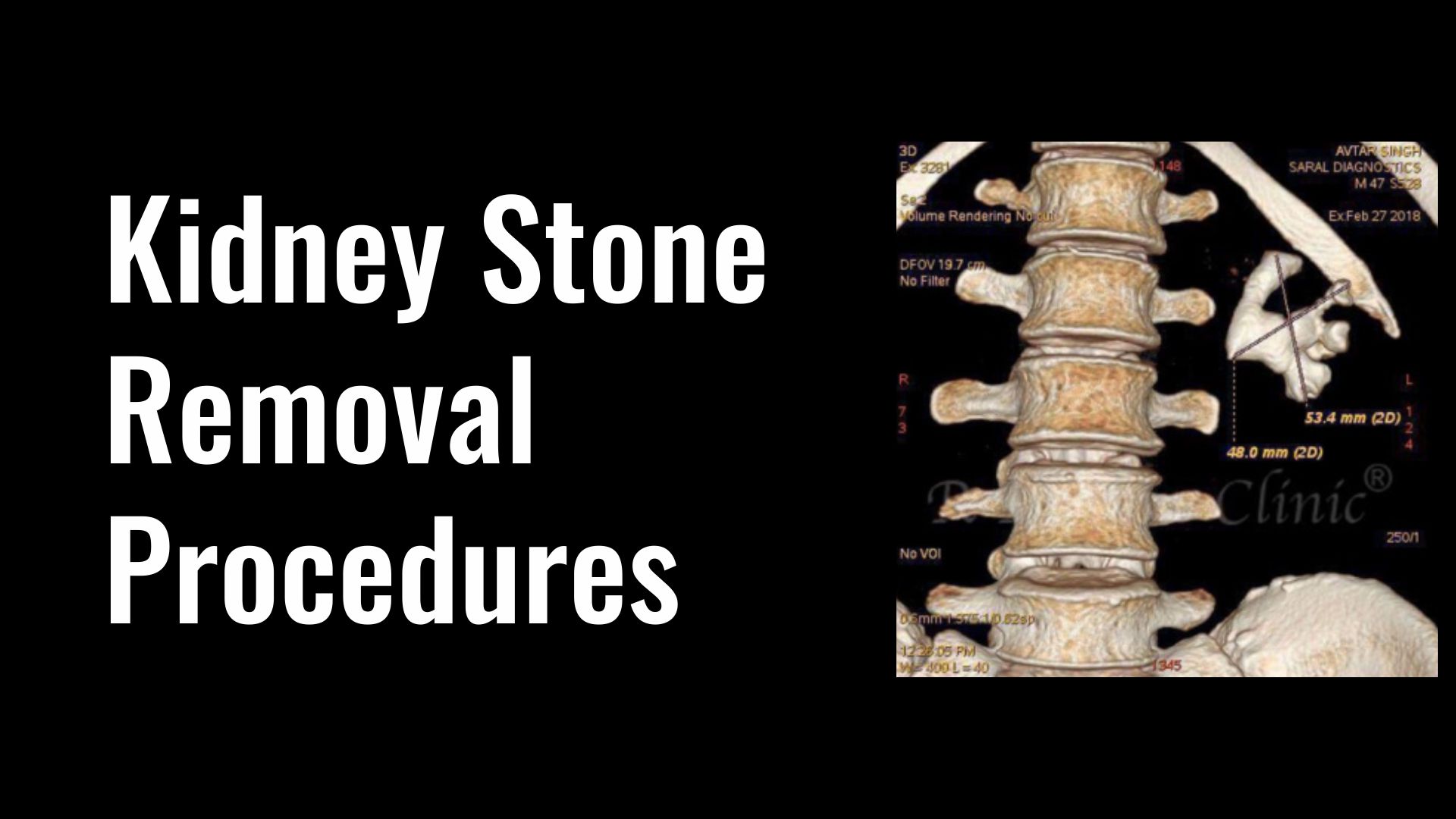Kidney stone removal procedures vary depending on the size, location, and type of the kidney stone, as well as the patient’s overall health. Here are the common procedures used to remove kidney stones:
Extracorporeal Shock Wave Lithotripsy
Extracorporeal Shock Wave Lithotripsy (ESWL) introduced in nineteen eighties.
Procedure : ESWL uses shock waves generated outside the body to break kidney stones into smaller pieces that can pass through the urinary tract.
Indications : Typically used for stones that are small to medium in size & are not hard ( Approx. HU less than 1000 ).
Anesthesia : Usually performed under mild sedation or monitored anesthesia care.
Recovery: Non-invasive with a short recovery period; patients can often go home the same day.
Ureteroscopy (URS)
Procedure : A thin, semirigid fiberoptic or digital scope (ureteroscope) is passed through the urethra and bladder into the ureter to directly visualize the stone. The stone may be removed with a small basket or broken into smaller pieces with a holmium laser (laser lithotripsy).
Indications : Usually used for stones located in the lower ureter.
Anesthesia : General or spinal anesthesia.
Recovery : Minimally invasive with a quick recovery time; may require a temporary stent in the ureter to facilitate healing.
Percutaneous Nephrolithotomy (PCNL)
Procedure : A small incision is made in the back, and a nephroscope is inserted directly into the kidney. The stone is then fragmented with ultrasonic or laser energy and removed.
Indications : Suitable for large stones.
Anesthesia : General or spinal anesthesia.
Recovery : More invasive than ESWL or URS, with a longer recovery period; hospitalization for a few days is usually required.
Retrograde Intrarenal Surgery (RIRS)
Procedure : A flexible ureteroscope is passed through the urethra into the kidney to break up stones using TFL or Holmium laser lithotripsy. Fragments are then removed or left to pass naturally.
Indications : Ideal for stones of 2 cm in the upper ureter & kidney
Anesthesia : General anesthesia.
Recovery : Minimally invasive, usually with a quick recovery time.
Open or Laparoscopic Surgery
Procedure : Traditional open surgery involves a large incision in the side or back to access the kidney and remove the stone. Laparoscopic surgery uses small incisions and specialized instruments to perform the same operation.
Indications : Reserved for very large stones or when other methods have failed or are not possible.
Anesthesia : General or Spinal anesthesia.
Recovery : Longer recovery time; hospitalization for several days is typically required.
Medical Expulsive Therapy (MET)
Procedure : Not a surgical procedure but involves the use of medications like alpha-blockers to help relax the muscles in the lower ureter and facilitate the passage of lower ureteral stone.
Indications : Used for small stones, particularly those located in the lower ureter.
Anesthesia : Not applicable, as it is a medical management strategy.
Bladder Stone Removal
Procedure : For stones that have migrated to the bladder, Cystolithotripsy is performed with TFL or Holmium laser using a cystoscope to break and remove the stone.
Indications : Used only for bladder stones.
Anesthesia : Local or general or spinal anesthesia.
Recovery : Minimally invasive with a short recovery period.
FAQ Kidney Stone Removal Procedures
1. What is Extracorporeal Shock Wave Lithotripsy (ESWL) used for?
ESWL is used to treat kidney stones that are small to medium in size and not too hard, with a Hounsfield Unit (HU) of less than 1000. It involves using shock waves to break the stones into smaller pieces that can pass through the urinary tract.
2. How does Ureteroscopy (URS) work in removing kidney stones?
Ureteroscopy involves passing a thin, flexible scope through the urethra and bladder into the ureter to visualize the stone directly. The stone is either removed with a small basket or broken into smaller pieces using a holmium laser.
3. What are the indications for Percutaneous Nephrolithotomy (PCNL)?
PCNL is typically used for removing large kidney stones. It involves making a small incision in the back to insert a nephroscope directly into the kidney to fragment and remove the stone.
4. What is Retrograde Intrarenal Surgery (RIRS) and when is it recommended?
RIRS is a minimally invasive procedure that uses a flexible ureteroscope to access the kidney through the urethra. It is ideal for treating stones up to 2 cm in the upper ureter and kidney.
5. When is open or laparoscopic surgery required for kidney stone removal?
Open or laparoscopic surgery is usually reserved for very large kidney stones or when other less invasive methods have failed or are not suitable.
6. What is Medical Expulsive Therapy (MET) and how does it work?
Medical Expulsive Therapy is a non-surgical approach that uses medications like alpha-blockers to relax the muscles in the lower ureter, helping small stones, particularly those in the lower ureter, to pass more easily.
7. How are bladder stones removed?
Bladder stones are typically removed using a procedure called cystolithotripsy, where a cystoscope is used to break up the stones with a laser, and the fragments are then removed.
8. What type of anesthesia is used for kidney stone removal procedures?
The type of anesthesia varies depending on the procedure. ESWL typically requires mild sedation, URS and RIRS usually require general or spinal anesthesia, while PCNL and open/laparoscopic surgeries often require general or spinal anesthesia as well.


Leave a Reply